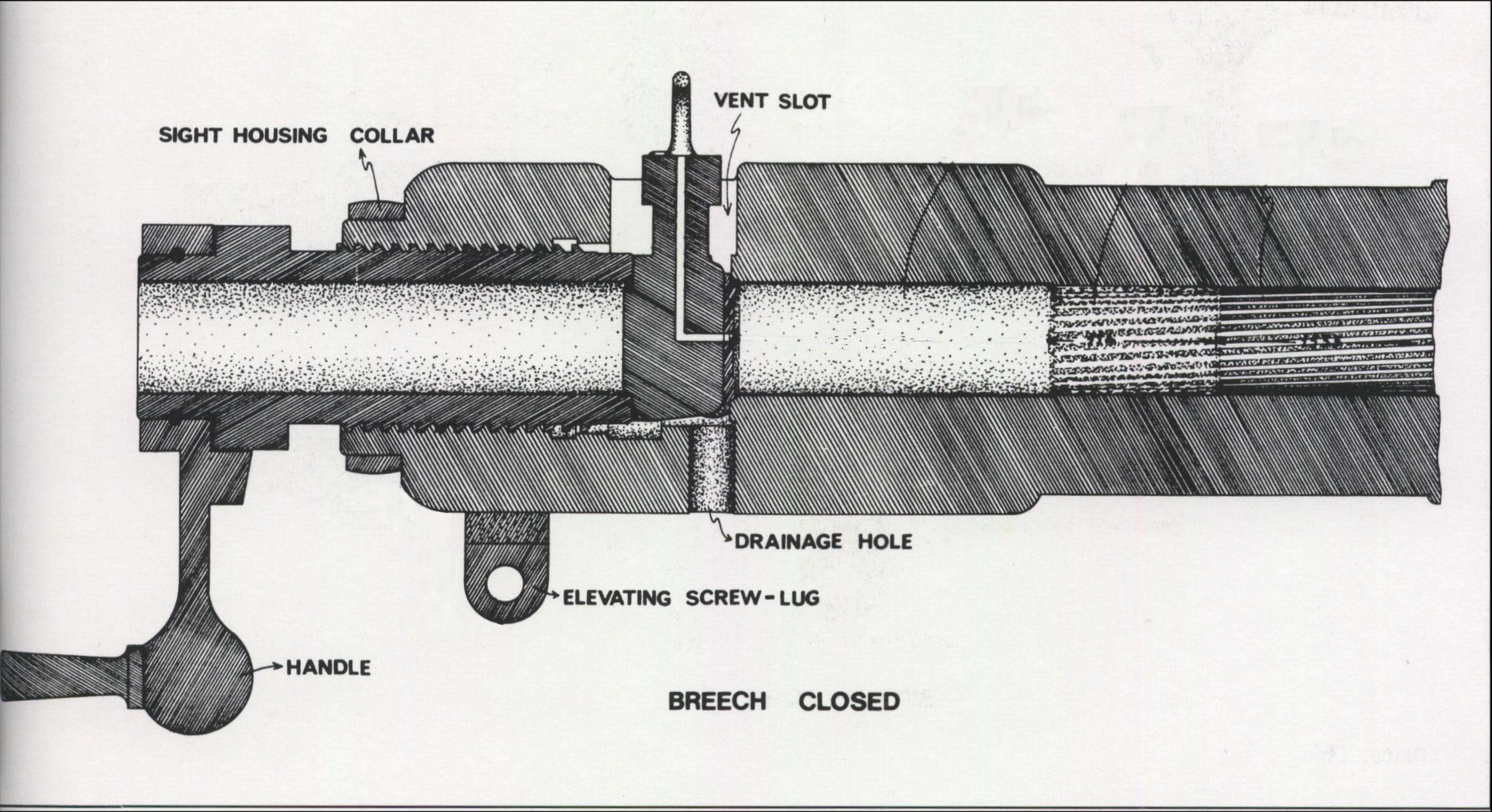
ARTILLERY REGISTER |
|||||||||||||||||||||||
|
|
||||||||||||||||||||||
| Historical Specifics: | The Armstrong rifled breech loading guns represent the first significant change in artillery design in over 400 years. Loading from the rear was accomplished by removing a special vent piece, placing in a spherical shaped projectile and propellant bag and then replacing the vent piece and closing it into position using a special weight lever. The barrel was rifled which imparted spin on the projectile when it was fired. This provided improved accuracy and increased range. Several models of the Armstrong gun were used in the Colonies. Victoria purchased six and Western Australia two of the 12 Pounder model. The carriage was unique being the first to give on-carriage traverse adjustment in Australia. The exact date of purchase of these guns by Victoria is not known but would have been in the period of the early 1860s.
In 1884 Sir William Clarke, a wealthy landowner of Sunbury, Victoria, aware of the apparent threat of a Russian invasion and concerned for the defence of the colony of Victoria, purchased three Nordenfeldt 10-barrel machine-guns and set up and paid the upkeep of, a small horse artillery battery under the command of his son Rupert. The unit was officially designated the "Nordenfeldt Battery”. Another wealthy pastoralist, Andrew Chirnside, agreed to contribute to the cost of raising and maintaining a half-battery of horse artillery at Werribee in 1889, of which his son Percy took command. This became known as the Werribee Half Battery. In March 1889 the Nordenfeldt Half Battery was re-equipped with old 12 pounder RML (Armstrong) guns and with the Werribee Half Battery became a Battery of the Victoria Horse Artillery. The unit was divided into two Half Batteries, the left half battery at Werribee Park and the right half battery at Rupertswood. The Werribee half battery disbanded two years later and the Rupertswood Battery became the pride of the colony, growing both in stature and experience. The Battery was disbanded in 1897, following the death of Sir William, and two of its four Armstrong guns were presented to Lady Clarke in honour of her husband’s contributions to the Colonies defence. Sir William’s daughter Priscilla brought one of the guns to Deniliquin with her when she married David Landale, and it remained at Dahwilly Station until 1986. At that time the Royal Australian Artillery became aware of the existence of the gun, one of only four remaining, and arranged for its restoration at the Army Apprentice School. Restoration work was begun in August 1988 by staff and apprentices and many units including the dental unit who cleaned the gun’s sights. The gun was returned to Deniliquin in December 1989 and housed near the entrance to the Deniliquin RSL Club in what was then, and perhaps still is, the best facility a monument gun can claim as home. A special Deed of Agreement was signed to ensure the long term safety of this very historic weapon. |
||||||||||||||||||||||
| General Information on Gun Type: | |||||||||||||||||||||||
| Additional Photos: |  |
||||||||||||||||||||||
©
